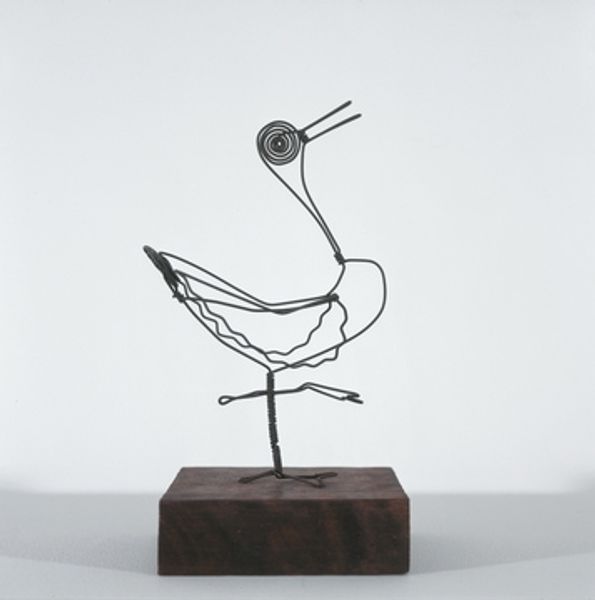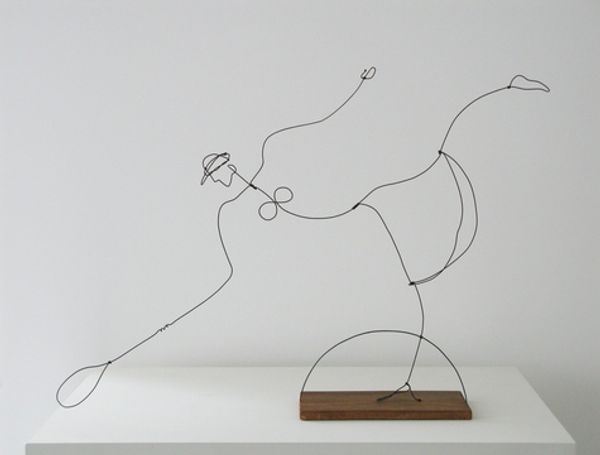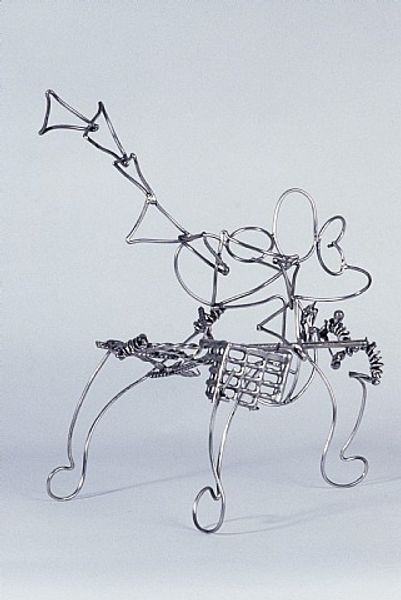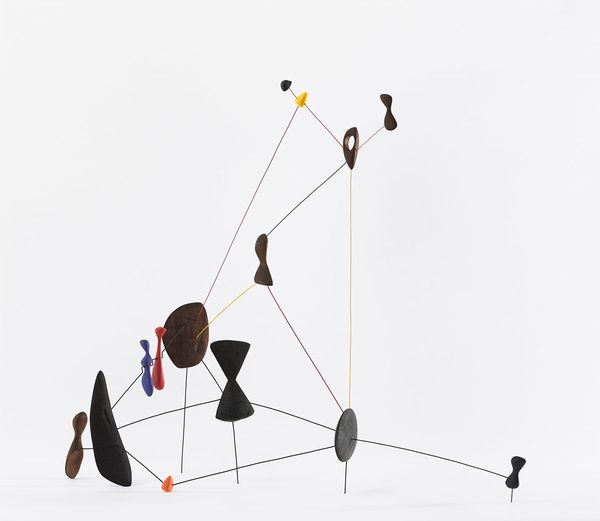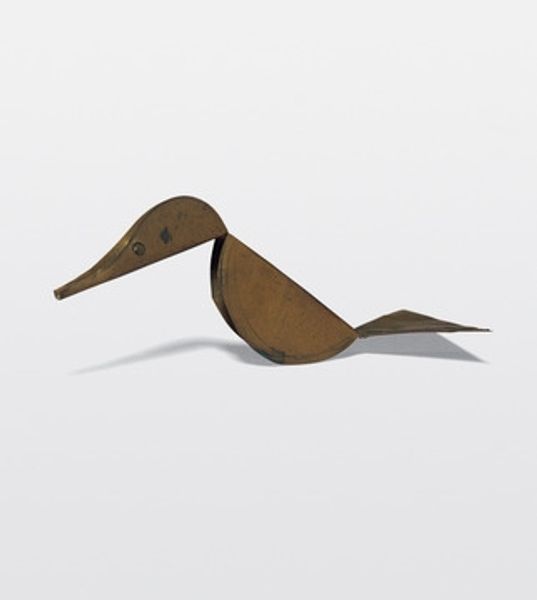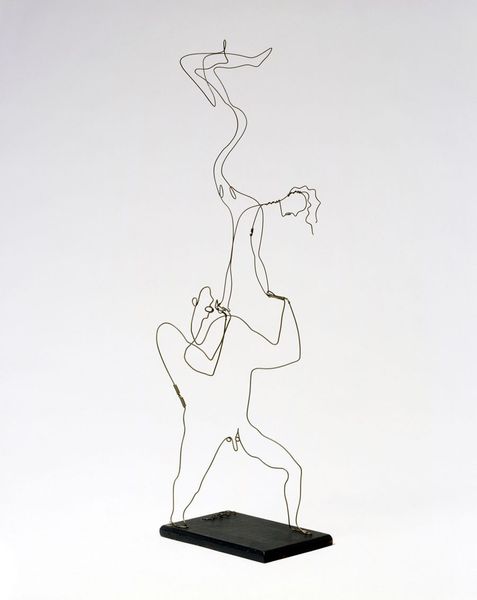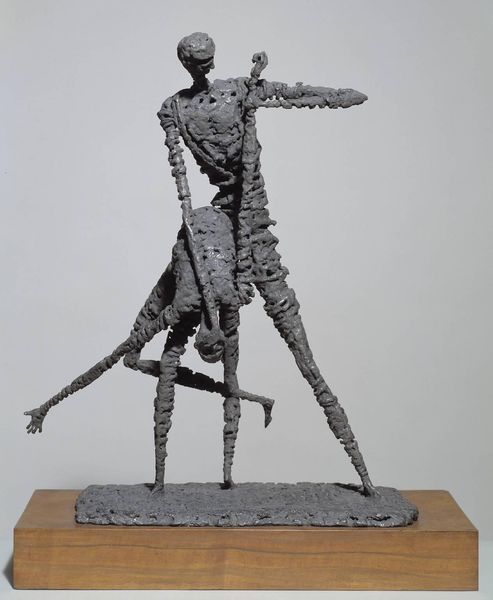
metal, sculpture
#
metal
#
figuration
#
sculpture
#
line
#
modernism
Copyright: Alexander Calder,Fair Use
Curator: This delicate sculpture before us is "Helen Wills," created by Alexander Calder around 1927. Made of metal wire, it embodies a playful essence of modernism. Editor: My first thought is of constraint and liberation existing simultaneously. The wire's thin lines suggest freedom, yet they meticulously define the subject in a rigid form. Curator: Indeed, Calder masterfully employs line as both structure and surface. Note how a single, continuous strand maps out the figure—there's a minimalist elegance at play. We can decode it using the language of abstraction. Editor: But let's also think about the sculpture's namesake. Helen Wills was a dominant tennis player in the 1920s, a woman breaking barriers in a male-dominated sport. This wire frame becomes a powerful symbol of a woman pushing against societal constraints, capturing the era's complex dynamics of gender roles. Curator: I see your point. And if we view that metal line, in its bending and curving, as a physical manifestation of Will's movements on the court. We can perceive something almost representational of power and strength. Editor: Consider how line is typically seen as secondary—a tool for outline. Calder elevates it, allowing it to define not only form but also an icon of modern female athleticism. Moreover, consider the racial implications within the sculpture, during the Harlem Renaissance. It highlights not only the barriers she broke within the world of tennis, but the racial boundaries that have consistently permeated sports and society, and were invisible. Curator: I'm intrigued by the potential semiotic analysis. The wire could signify boundaries being actively transgressed, in keeping with the player’s persona as you frame it. Editor: I see "Helen Wills" as a multi-layered intersectional narrative rendered in metal—a physical manifestation of athletic prowess intertwined with prevailing questions related to gender, identity, race, and socio-political dynamics of the 1920's Curator: Very insightful. Calder provides a novel perspective on representing form and identity. Editor: He does, but he equally prompts consideration of those socio-historical intersections I described.
Comments
No comments
Be the first to comment and join the conversation on the ultimate creative platform.


